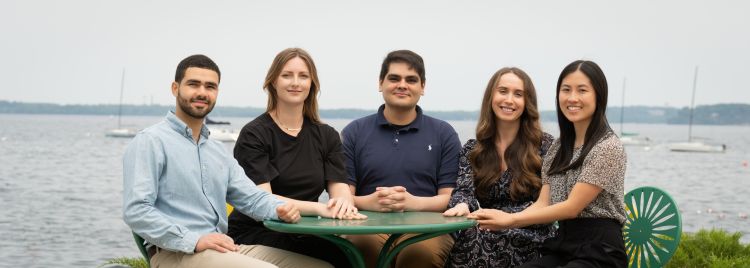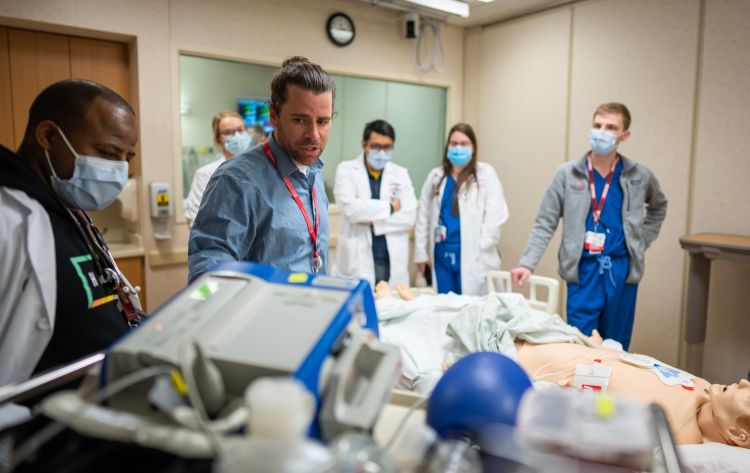UW Internal Medicine Residency adds 5th chief resident position
As the program grows, its focus on quality continues

The University of Wisconsin (UW) Internal Medicine Residency will increase from four to five chief residents this academic year and beyond, allowing the program to maintain its focus on quality education at a time of steady growth.
The program currently enrolls its full Accreditation Council for Graduate Medical Education (ACGME)-approved complement of 112 residents and offers over 400 hours of curriculum. In the last three years, it has also tripled the time residents spend in simulations.
"Not all programs place as much importance on chief residents as we do,” says program director Andy Coyle, MD, associate professor, General Internal Medicine. “We believe they’re our best educators and the best near-peer mentors a resident can have. Having a better chief-to-resident ratio makes for a more truly individualized experience.”
We believe our chiefs are the best educators and best near-peer mentors a resident can have.
Andy Coyle, MD, program director, IM Residency
“They’re also some of the key architects of our curriculum,” says Dr. Coyle. “They’re thinking about what we should teach and how we should teach it. They lay the groundwork for strong educational experience, facilitate faculty teaching sessions, and do a lot of teaching themselves.”
In collaboration with Dr. Coyle and the associate program directors, each chief cohort develops their year’s curriculum to meet ACGME guidelines while ultimately preparing residents for their internal medicine boards and independent practice.
Historically, one chief resident has been responsible for curriculum scheduling across all residency years. Now two chiefs will serve in this role, with a separation between intern (PG-1) and senior (PG-2 & 3) curricula.
The expansion allows the program to maintain its high-quality curriculum, distribute responsibility more equitably, and meet our residents where they’re at.
Jacki Johnson, M.Ed, program administrator, IM Residency
This better reflects the different needs of a given year. For example: PG-2s spend more time in the simulation center and in professional development sessions to shape their career vision, while PG-1s have a stronger curricular focus on didactics and clinical reasoning sessions.
“The expansion allows the program to maintain its high-quality curriculum, distribute responsibility more equitably, and meet our residents where they’re at,” notes Jacki Johnson, M.Ed, the residency's chief administrator.
The addition of a fifth chief also means there will be one more faculty/staff member who can listen and respond to resident needs outside of the classroom or simulation center, as well as a stronger physical chief presence in UW Hospitals and Clinics and the William S. Middleton Memorial Veterans Hospital (VA).
For the chiefs themselves, it also means a more substantial role working with a large curriculum. It’s an additional growth opportunity for future leaders in medical education.
“Above all,” Johnson concludes, “this change is a clear and exciting statement about our ongoing commitment to quality resident education, leadership development, and wellness.”
The 2025-26 chief residents, pictured in the banner from left to right, are:
- Ahmed El Shaer, MBBS
- Jessica Comerford, MD
- Adam Koraym, MD
- Tonela Qyli, MD
- Jeanette Liou, MD
